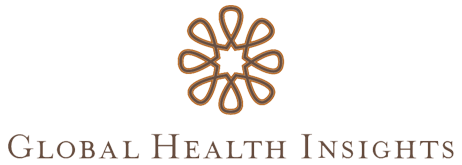February 28, 2018
A nurse in Burundi using a pregnancy wheel. Photo by Kristy Carlson | longmilescoffeeproject.com
At the end of every month, we highlight key readings—and other information sources such as podcasts and videos—that during the month have provided us with new knowledge about efforts to improve access to health technologies in low- and middle-income countries (LMICs). Though we are always eager to learn about exciting new technologies for health improvement, what really matters, in our view, is the process of getting these technologies to the people who need them. Therefore, the knowledge sources that we highlight here are not about the characteristics and uses of health technologies, but instead are about the people and systems that make access happen. When we talk about access, we mean “people’s ability to obtain and appropriately use good quality health technologies when they are needed” and we conceive of the access process in terms of four sets of activities—related to architecture, availability, affordability, and adoption—that occur simultaneously at the global-level and within national health systems (click here for more about this access definition and framework). In curating these readings every month, we hope to spotlight emerging knowledge about new and ongoing efforts to address persistent barriers to access, the consequences (both intended and unintended) of these efforts, and information gaps in the access to health technologies field.
— Sofosbuvir is a much needed treatment for hepatitis C but its high price means it is unaffordable to many patients around the world. This is the story of how a group of doctors, government officials, generic drug makers, and activists in India drove down the cost of sofosbuvir through various strategies including addressing IP barriers, regulatory barriers, and utilizing patient pooling.
— Though it’s critical to access, the process of procurement is relatively understudied in the academic literature. This paper examines procurement work processes in Tanzania and Kenya, as experienced by front line staff, and warns that the increased globalization of procurement systems has had the effect of weakening linkages within countries between health sector procurement and the local pharmaceutical and health supply industry.
— Partners in Health (PIH) shares its experiences of setting up laboratory networks, with a particular focus on pathology and TB diagnostics, in Haiti and Rwanda. The authors discuss how PIH addressed access obstacles related to “staff, stuff, space, and systems,” and argue that a strong commitment to the building of laboratory capacity in partnership with national health authorities will lead to better patient care while also strengthening the public health sector.
— The Health Intervention and Technology Assessment Program (HITAP), Thailand, and the National Institute for Health and Care Excellence (NICE), UK are two institutes that have conducted capacity building for health technology assessment (HTA) throughout LMICs. In this paper, they share their lessons learned from HTA capacity building efforts in India, Colombia, Myanmar, the Philippines, and Vietnam. Key challenges include fostering of political commitment, stakeholder participation, and technical integrity of HTA in order to sustain the use of evidence in policymaking.
— The WHO Model List of Essential Medicines (WHO EML) is a guide for the development of national and institutional essential medicines list, and contributes to improving access to essential medicines. Anyone can petition for a medicine to be added to the WHO EML, and in this paper, the authors describe and assess their efforts over the last decade to modernize, through biennial petitions, the WHO EML for medications for preventing and controlling cardiovascular diseases. Unfortunately the paper is not open access but here is a (less compelling) audio summary.
— Related, a call for an essential diagnostics list similar to the WHO’s EML.
— Dr. Tedros’ remarks on 26 February at the WHO-WIPO-WTO Technical Symposium on Sustainable Development Goals: “…access to health technologies—vaccines, diagnostics, medicines, medical devices and assistive technologies—is a key pillar of universal health coverage…We must not tolerate systems that put the protection of intellectual property ahead of the protection of health. Patients must always come before patents…We’re committed to working with all partners, including WIPO and WTO, and other relevant agencies such as UNCTAD and UNDP, to help countries increase access and make progress towards universal health coverage.”
–And if you haven’t seen it yet, check out this tool put together by the Medicines Patent Pool for finding out the patent status of essential medicines for HIV, TB, hepatitis C ,and cancer in LMICs, as well as licences and data exclusivity: http://www.medspal.org/
— In the Lancet this month, editor Richard Horton writes that public health science needs to give greater attention to the “lived experiences of people in societies” and to “recognize the importance of identity, reasoning, and voice.” We agree and recommend Ramah McKay’s new book Medicine in the Meantime, an ethnographic account of two global health projects in Mozambique, told through the lens of the lives of patients and health care providers.
— And finally, for my fellow podcast lovers…in this episode of the Future of Healthcare, Fred Ochieng shares his powerful story of growing up in Lwala, Kenya including memories of malaria illnesses and treatments, and his family’s reliance on Where There is No Doctor for health information; moving away to the Nairobi area and the US for his secondary schooling and graduate education in medicine; losing his mother and then his father to HIV/AIDS; and returning home with his brother to set up a health clinic in Lwala.
Do you have a knowledge source that you think should be included? Great! Please send suggestions to Laura at [email protected] or tweet to us @glohi4access.

